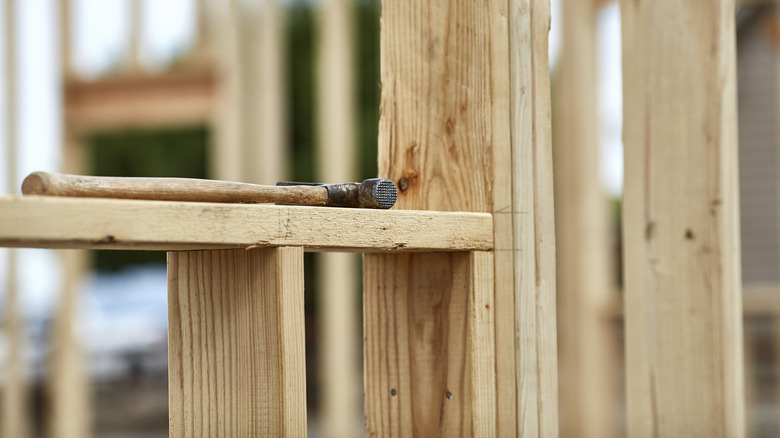Different 2x4 Wood Types
If you think all 2x4 wood is created equally, think again. While most 2x4s are used for structural purposes, this versatile wood can also be used for a variety of projects. Whether you're building furniture from scratch or looking to create something more aesthetic, 2x4s are useful materials to work with.
Two-by-fours made from certain types of wood are also sometimes chosen for their distinct outdoorsy aroma, which is naturally appealing. Sometimes referred to as studs, they vary in weight, density, color, strength and resistance. Don't limit yourself to a single type when there are many to choose from. Consider your intended project when deciding which type of two-by-four is right for you.
Decide Between Rough or Planed 2x4 Lumber
Don't let the name fool you. Two-by-four is a figure of speech and is not meant to be taken literally. The variance is because of milling needed to produce clean, smooth types of lumber.
Before planing, 2x4s have inconsistent dimensions of width and thickness, typically varying by about 1/4 to 1/2 inch along the length. This type of 2x4 is known as a rough 2x4. There is limited availability of this type of stud, and it's cheaper. You may need to go to a lumberyard to find it. If you have planing equipment, you can plane it down yourself and save money or use it as-is.
Dimensional 2x4 studs are far more common; they're smooth with rounded corners after planing and consistently measure 1 1/2 inches in thickness and 3 1/2 inches in width.
Fir, Hemlock, and Pine Options
One of the most commonly used 2x4s for framing is made from softwood known as Douglas fir, with hemlock a close competitor. The two species share similar qualities of strength, appearance and durability and are often marketed together and sold as Hem-fir. They are sometimes marketed separately when graded for appearance, but the two species are interchangeable for most structural applications.
Yellow or southern pine, another softwood with a similar appearance, should not be confused with fir or hemlock; it's harder and more expensive. Other pine varieties include ponderosa and lodgepole, which are softer, less expensive and not as strong as fir, hemlock or yellow pine.
Redwood Original and Its Restrictions
Redwood 2x4s are among the most expensive. The natural weather and insect resistance, deep red color and uniform quality make redwood studs ideal for outdoor furniture, decking, railing and applications involving hot tubs and saunas. Redwood is regulated by environmental laws that prevent large quantities from being harvested. Check with local suppliers for availability before planning to use redwood.
The Scent of Cedar
While aroma may not be the first thing that comes to mind when you think of2x4s, those made of cedar give off a fragrant scent that is appealing to many. When it comes to aroma, almost nothing compares to cedar 2x4s.
Thanks to its stability and consistently straight pieces, cedar is a popular choice for residential structures, particularly those with exposed beams like those seen in cabins or lodges. Not only are these cabins and lodges built with cedar visually appealing, they also give off a pleasant woodsy fragrance that adds an outdoorsy ambiance to the room.
Spruce it Up
Serving as an affordable alternative to cedar, spruce has excellent decay resistance with similar beauty. It has the highest strength-to-weight ratio of all the available types of 2x4s. It's readily available at most home supply stores or lumber yards and is one of the straightest 2x4s available. Use it indoors as you would any other stud or outdoors as a cheaper version of redwood.
